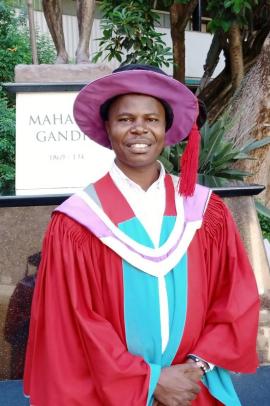
Eng. Omondi has a strong Civil Engineering Background with a BSc. In Civil Engineering from JKUAT, 2007, MSc. Civil Engineering from UoNbi, 2014. Additionally, Eng. Omondi has over 13 years work experience as Civil/Structural Engineer of which 7 years are post registration as a licensed practicing professional Engineer in Kenya.
Eng. Omondi’s experience spans from design and supervision of high-rise buildings, bridges and road drainage structures to design and supervision of water structures with a unique experience in small hydro-power projects and EPS structures. Erick has also managed several projects in the capacity of a project manager and consultant Engineer.
Generally, Erick has had an experience in the following areas; Geotechnical Investigations and foundations designs, Engineering surveys (Topographic, Traverse and Leveling), Structural Engineering Analysis, Structural Engineering Designs, Materials Engineering, Environmental/ Sanitation Engineering, Water structures design and supervision, Supervision and Project Management for Several Projects.
Project Summary
Anaerobic Co-Digestion of Water Hyacinth (Eichhornia crassipes) with Ruminal Slaughterhouse Waste under Mesophilic Conditions
Water hyacinth (Eichhornia crassipes), an invasive water weed with large biomass, poses serious socio-economic and environmental challenges in fresh water bodies such as Lake Victoria in East Africa. Efforts for its control and removal can be complemented by biogas production for use as energy source. However, knowledge of chemical and nutritional composition of its largely complex lignocellulosic biomass is important in determining its conversion into biogas. The complex structure of lignocellulosic biomass of water hyacinth (WH) can affect its biodegradability and limit biogas production. On the other hand, co-digestion with complimentary substrates can potentially make it more amenable to biodegradation and improve biogas production. Biomethanation involves a combination of physico-chemical conditions in the bioreactor and the action of microbial community. Understanding the dynamics of the microbial community can provide insights on how co-digestion influences biogas production.
This study evaluated the synergy in co-digestion of WH from Lake Victoria with ruminal slaughterhouse waste (RSW) from Dagoretti slaughterhouses in Nairobi. The study characterized WH and RSW as co-substrates in biogas production by conducting proximate, crude fiber, elemental and biochemical analysis. It evaluated influence of processes parameters pH, temperatures, reaction times and substrate mix proportions on biogas production for WH and RSW substrates digested separately and in co-digestion. The study also investigated microbial communities in digestion of single substrates and in co-digestion at critical stages of biogas production by isolation, identification, DNA extraction, 16S rRNA gene amplification and sequencing using Basic Local Alignment Search Tool (BLAST) technique.
Supervisors
Dr. Peter Ndiba
&
Dr. Peter Njuru
